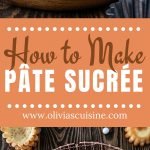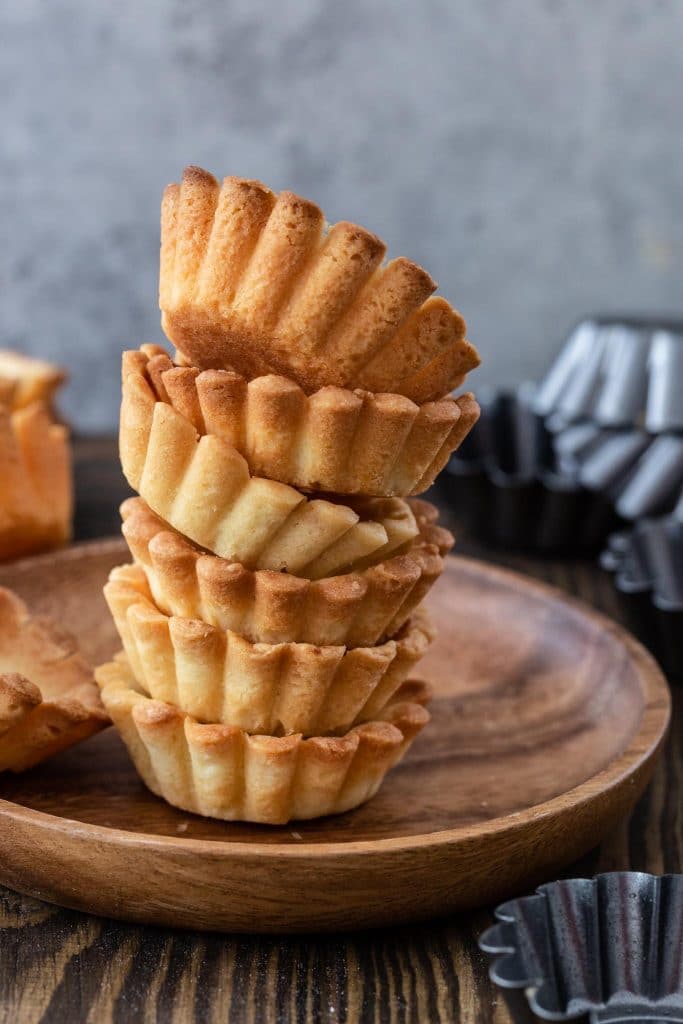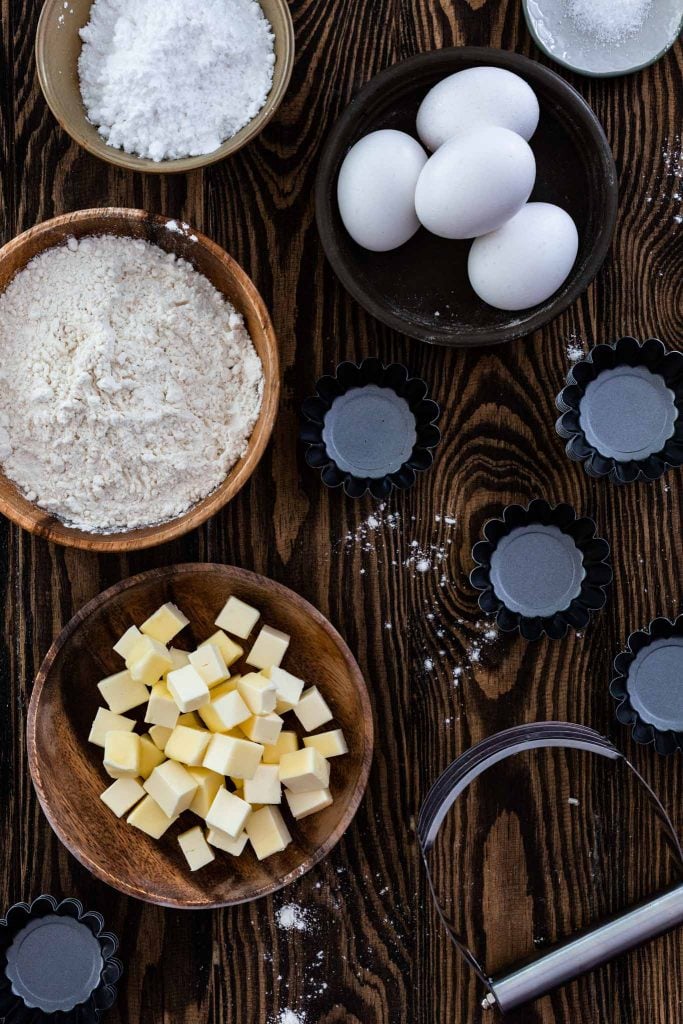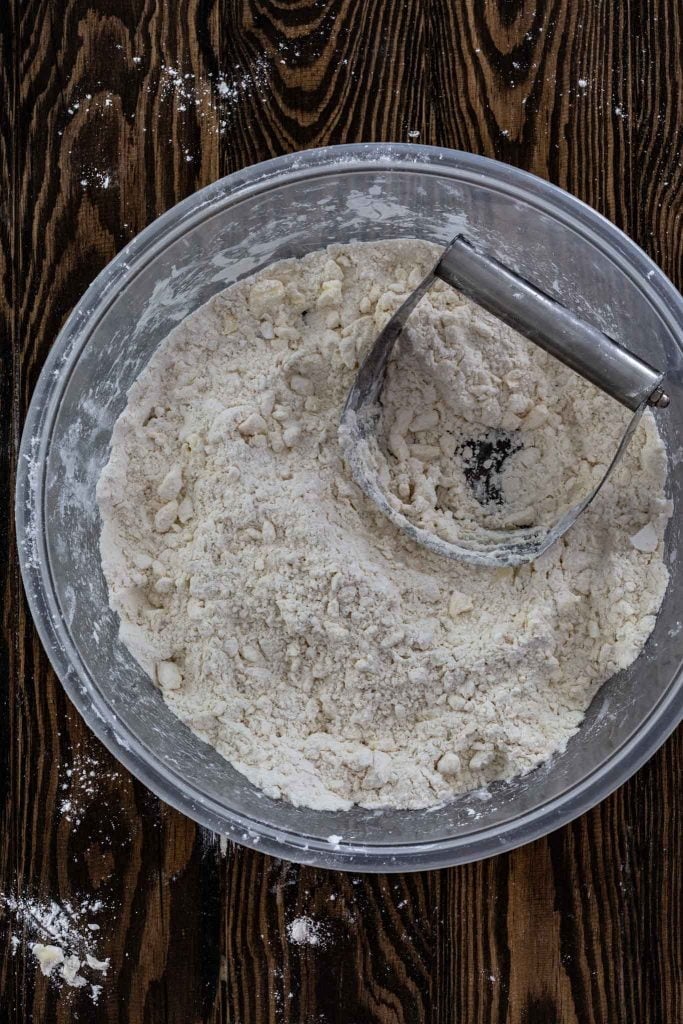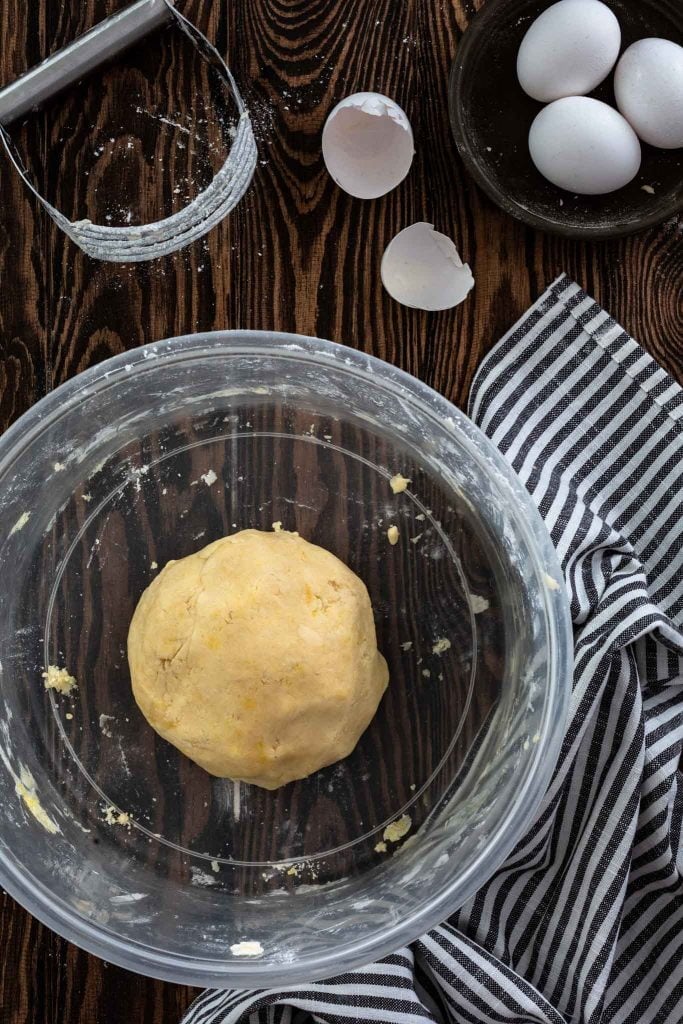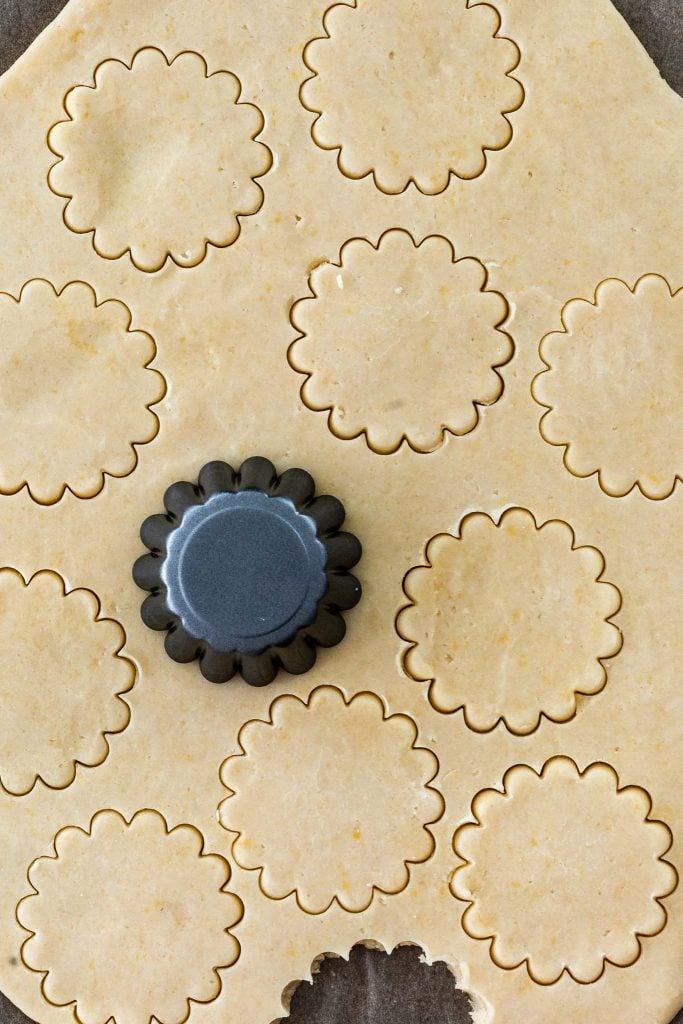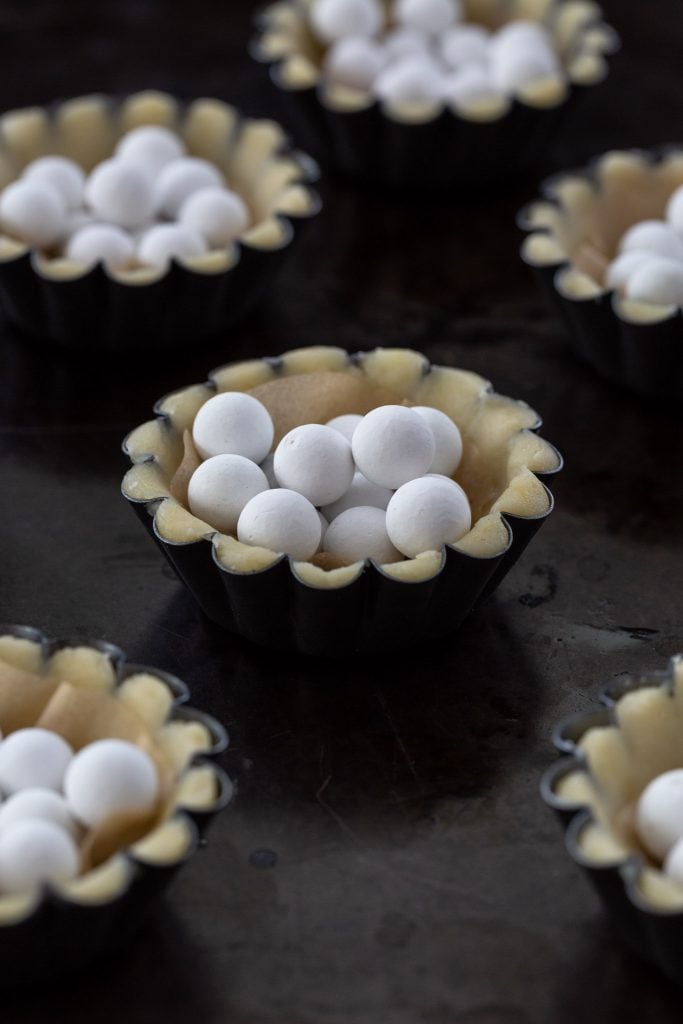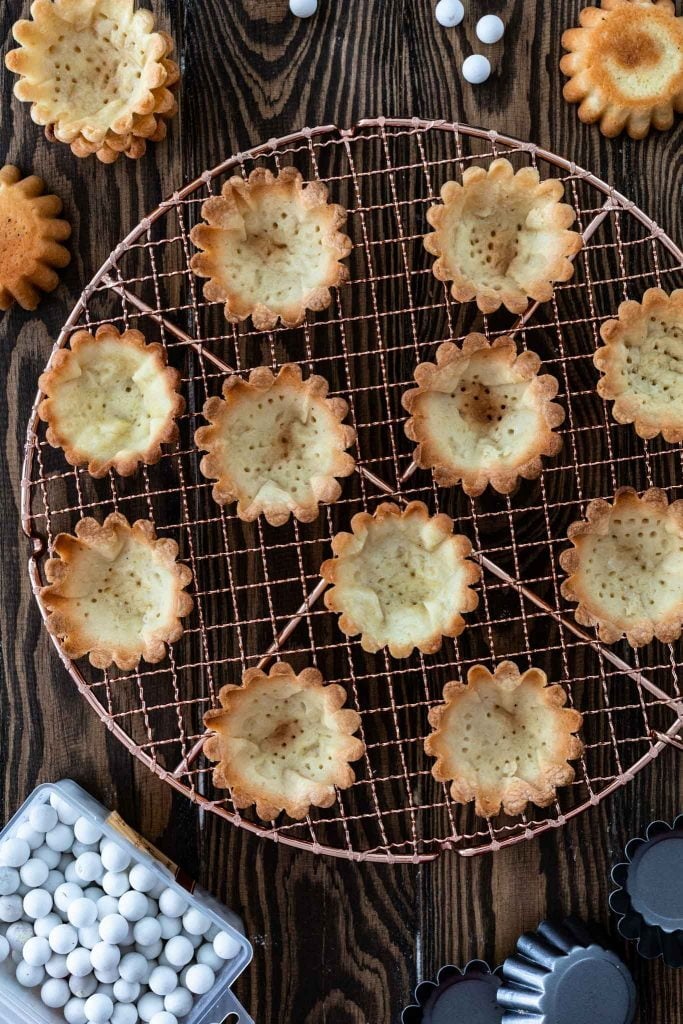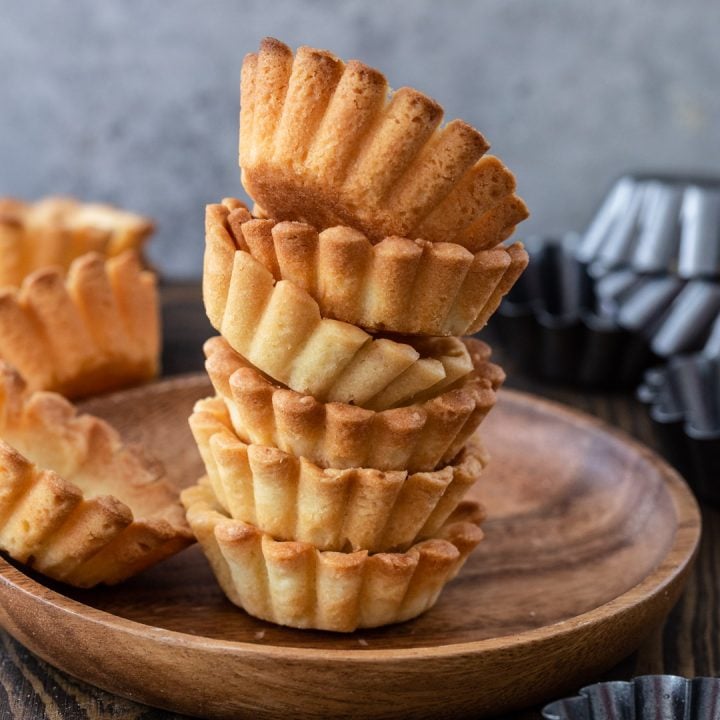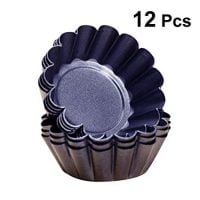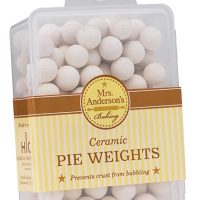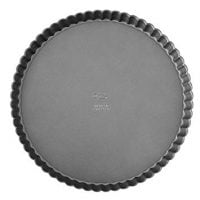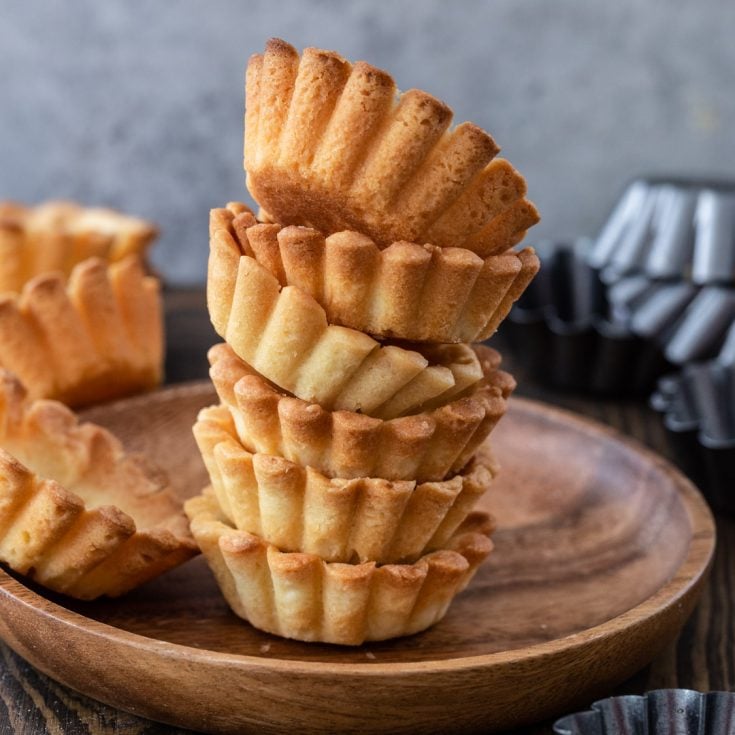Are you intimidated by French cooking? I’m not! And it’s not because I’m better than you. On the contrary! I crash and burn a lot until I master French dishes. But I decided earlier in my cooking journey that I wouldn’t be afraid of cooking anything. After all, what’s the worst that could happen? Taste bad? Fall apart? As long as I don’t burn the house down – or destroy something expensive, like my Le Creuset pots – it’s all good. I can always try again! And that’s exactly what happened when I decided to teach myself how to make Pâte Sucrée. I had to make it a bazillion times – okay, it was actually just three or four – until I got it right! All that to tell you that it is a-okay if you don’t get this perfect the first time around. The good news is that if you follow my tips, you probably won’t make the same mistakes I did and your pâte sucrée will come out great! But one thing I know for sure is that it will get better every time you make it!
Ingredients for French Pastry Crust
A handful of ingredients is all you’ll need! And, if you like to bake, chances are you already have them on hand.
Flour Butter Salt Powdered sugar – produces a more tender, melt-in-your-mouth crust than granulated sugar. Egg
What is Pâte Sucrée and how to make it?
Pâte Sucrée – pronounced “pat-sue-cray” – is the French term for a sweet pastry dough, traditionally used for tarts. It is sweeter, crumblier and softer than pie doughs. I find that it actually resembles more like a shortbread cookie, which is why it is able to support even the heaviest fillings without falling apart. This recipe is for the basic version, consisting of just flour, sugar, salt, butter and egg. If you want to spice things up, you can easily add spices or extracts. Cinnamon and ground ginger are great for the holidays. Coconut, cocoa powder and lemon extract are also yummy options, depending on the tart you are making. As for the method, there are several different techniques for making pâte sucrée. After trying a few, I am sticking to the one that is the easiest. No fraisage, which is the technique of pressing the pastry against the counter with the heel of your hand. Julia Child describes it as a way to ensure an even blending of fat and flour and claims it produces a crumblier and more tender crust. I honestly didn’t see much difference, so I’m choosing to skip it! Some methods will have you cream softened butter and sugar together before adding the flour. Other recipes will ask you to use a food processor to save time, claiming that it also blends the flour and butter better. I like to do mine by hand. Not sure why, but the results are always better that way!
What’s the difference between Pâte Sucrée, Pâte Brisée and Pâte Sablée?
So many fancy terms, right? But don’t be intimidating! They are all variations of shortcrust pastry. They just sound difficult because they are in French. Pâte Sucrée – Is the one we are learning today and the sweet version of these pastries. It contains egg and more sugar than the standard shortcrust pastry. Light, fine, strong and almost like a shortbread cookie. Pâte Brisée – Is your standard savory tart crust. Similar to American pie crust but stronger, not as flaky and with a finer crumb. Pâte Sablée – The “sandy” pastry. It is sweet and similar to Pâte Sucrée, but more delicate, crumblier and richer. It sometimes contains almond flour.
What is blind baking?
Blind baking is the method of partially or completely baking the crust before adding the filling. It prevents your crust from getting soggy when filled. When a crust bakes, pockets of steam cause the layers of pastry to puff up, which is not ideal when the ultimate goal is to fill the crust with something else. The solution is to line the unbaked crust with parchment paper (or foil) and fill that with pie weights or dried beans. The weight will prevent the dough from puffing up while it bakes. Once the crust is set and the edges are turning golden, the paper and weights are removed and the pastry goes back to the oven to finish browning. If you are partially baking, take it out when the bottom looks dry but still pale. If fully baking, the bottom should turn light golden brown.
Pâte Sucrée tips:
Plan ahead because the dough will have to chill for at least 2 hours. Don’t overmix the dough or your crust will come out hard. Once it comes together when squeezed, it is ready! This crust is supposed to be melt-in-your-mouth tender. As mentioned earlier, feel free to customize with spices and extracts, like cinnamon, ground ginger and cocoa powder. Pay close attention to your oven when baking. Your pastry crust can go from golden brown perfection to a burnt mess in seconds! Ask me how I know! Sigh… Can I make the dough ahead? Yes. The dough can be refrigerated for up to 2 days before using. It can also be frozen for up to 2 months. Can I bake the shells ahead? Also, yes. The baked crusts can be stored at room temperature, in an airtight container, for 2-3 days or frozen for a couple of months. The tart crusts can be made ahead but assembled shortly before serving. When the tarts are filled, they should be consumed ASAP, as the leftovers will get soggy in the fridge.
Other French recipes:
Flamiche aux PoireauxGougeresJambon-BeurreCroque MonsieurCherry ClafoutisMousse au Chocolat
Rolling out the dough: Transferring the dough to the pan(s): Blind Baking the pastry crust:
You can easily customize this recipe by adding cinnamon, ground ginger, cocoa powder, coconut, or other extracts.The dough can be stored in the fridge for a couple of days before rolling it out. You can also freeze it for up to 2 months.The baked pastry crusts can be stored at room temperature, in an airtight container, for 2-3 days. They can also be frozen for a couple of months.
Tartlet Pans Pie Weights Tart Pan
